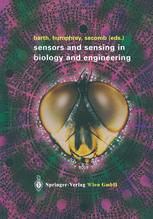

Most ebook files are in PDF format, so you can easily read them using various software such as Foxit Reader or directly on the Google Chrome browser.
Some ebook files are released by publishers in other formats such as .awz, .mobi, .epub, .fb2, etc. You may need to install specific software to read these formats on mobile/PC, such as Calibre.
Please read the tutorial at this link: https://ebookbell.com/faq
We offer FREE conversion to the popular formats you request; however, this may take some time. Therefore, right after payment, please email us, and we will try to provide the service as quickly as possible.
For some exceptional file formats or broken links (if any), please refrain from opening any disputes. Instead, email us first, and we will try to assist within a maximum of 6 hours.
EbookBell Team

4.3
68 reviewsBiological sensors are usually remarkably small, sensitive and efficient. It is highly desirable to design corresponding artificial sensors for scientific, industrial and commercial purposes.This book is designed to fill an urgent need for interdisciplinary exchange between biologists studying sensors in the natural world and engineers and physical scientists developing artificial sensors. Contributions from leading scientists in this area, whether engineers or biologists, are written to be accessible to readers from these and other disciplines. The main topics cover mechanical sensors, visual sensors and vision and chemosensors. Readers will obtain a fuller understanding of the nature and performance of natural sensors as well as enhanced appreciation for the current status and the potential applicability of artificial microsensors. Friedrich G. Barth was awarded the "Karl-Ritter-von-Frisch-Medaille” at the 2003 Annual Conference of the German Zoological Society in Halle, Germany.